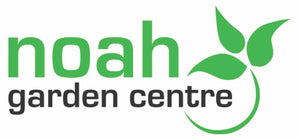Before starting on the journey to plant parenthood, there are a few things to keep in mind for your plants to have a healthy, long life.
-
Choosing the Right Plants
Rule number 1, and perhaps the most important of all, is to choose plants based on your lifestyle. Jetsetters will find comfort in the sturdiness of low-maintenance Snake plants or ZZ plants. These plants are virtually indestructible and requires infrequent watering to remain perky and beautiful.
If you’re an adventurous indoor gardener, consider getting the ever popular Monstera plants, Ficus plants or ferns. Give some TLC to these temperamental plants and they’ll thrive well in your home.
-
Know your Lighting
Now that you’ve (probably) chosen which plants suit you best, the next step is to familiarise yourself with the kinds of light exposure your home receives. The easiest way to determine that is by checking the direction your windows are facing:
South-facing windows give direct sunlight, east/west-facing windows give indirect sunlight and north-facing windows give low light. Most houseplants flourish in bright, indirect sunlight.
-
Repotting
Our green pals are like us, they grow as they age. For plants, they grow in length and at their roots as well.
We recommend repotting your plants when you notice that their roots start poking out of drainage holes. That means they are growing too big for their pot! Think of it as wearing clothes – once you outgrow your clothes, you get new ones. Choose a pot that’s just about a few inches larger than the original pot.
Don’t pair big pots with plants that have a small rootball size. A big pot carries a big amount of soil meaning it’ll hold too much water which can rot the roots.
-
An Insight to Watering
Here’s a tough question. How much water is too much water and how often?
Less water is more and we mean that literally. It's better to thoroughly water your plants once or twice a week than to water every day. Our plant expert recommends watering your plants only when it needs it. Too much water could lead to root rot and turn the leaves yellow.
Noah Tip #1: Test the soil first by dipping your finger an inch into the soil. Does it feel moist and sticks to your finger? If yes, your plant has enough water.
Noah Tip #2: If your pot has no drainage, be careful not to exceed ¼ of the pot’s volume of water when watering.
Noah Tip #3: Plants absorb warm water the best. Always water on the base around the plant instead of one concentrated spot so that your plant receives its nutrients properly.
-
Hole in your Pots
That hole at the base of your pots means it has drainage for water to flow out to prevent overwatering. It’s important that your planter has drainage if you’re planning or outdoor gardening. You can get either a saucer or tray and place it below your planter to avoid spillage if you plan to keep it indoors.
-
Fertiliser, Yes or No?
It’s good to give your plants some nutrients in moderation as too much can do more harm than good. Always dilute store-bought fertilisers before use unless otherwise stated and follow the instructions closely. Fertilise your plants once every 3 to 8 months depending on the plant size.
-
Plant Shock
“I just bought my plant and the leaves are already falling off!”
We heard you!
Plant shock is the most common cause of leaf drop. This happens when plants are removed from their nurseries and moved to location with less-than-ideal conditions. It’s usually a response to sudden, striking changes in temperature, humidity, sunlight levels or watering habits. Your plants will need time to recover and adjust to its new environment. Water your plants immediately after they have been repotted to help them adjust better.
-
TLC
Showing your plant a little TLC will allow it to thrive in your home. Take care to observe when your plant needs water, when it has enough and if it’s receiving enough sun. Spending some time together will allow you to understand your plants’ needs.

